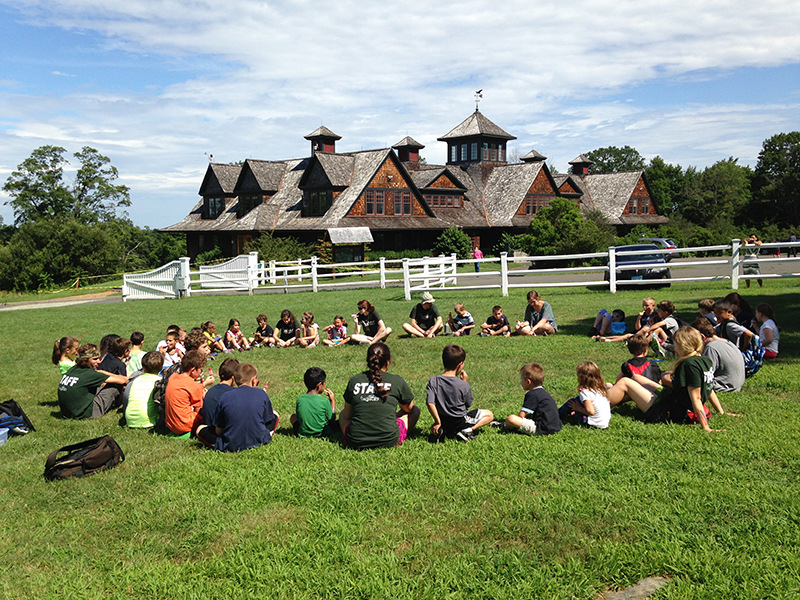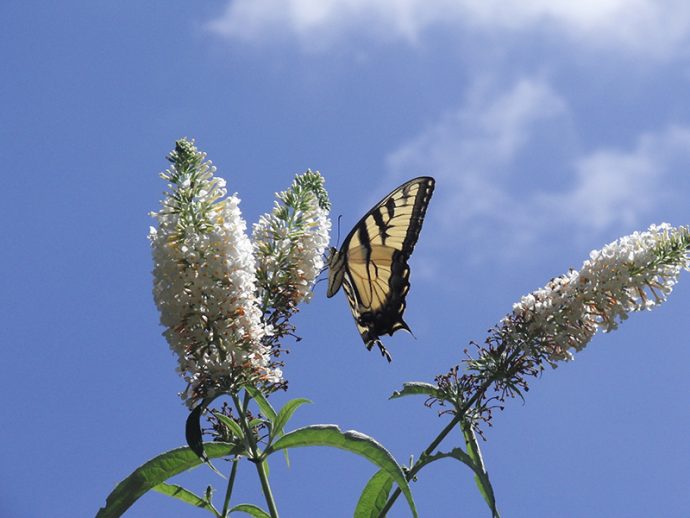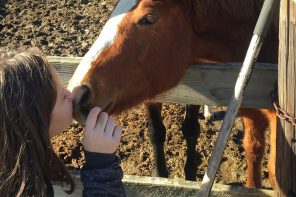With birds, wildlife and plants bursting onto the scene, Audubon Greenwich is springing to life this April and offering a variety of public programs and activities for people of all ages to enjoy.
Funded by Eleanor and Hall Clovis, the center first opened in 1943, and its main sanctuary, off of Riversville Road, is recognized as the first educational nature center of the National Audubon Society.

“Audubon Greenwich has now grown to include seven sanctuaries and other private parcels with 15 miles of trails crossing over 686 acres of protected wildlife habitat,” says Eli Schaffer, the center’s public programs manager.
According to Schaffer, “April visitors can expect to see everything from robins, cardinals, blue jays and goldfinches, to frogs, groundhogs, woodchucks, skunks and migrating salamanders.” He says spring wildflowers will also be sprouting up from the forest beds of oak, beech and maple trees.
Schaffer notes that one of the most exciting birds to look out for this spring is the American woodcock. “With its long pointed beak and muted beige coloring, the bird is known for its eccentric display in meadows, exhibiting a fantastic dance that involves mid-air somersaults and exuberant feather rustling.”
While visitors are often found walking around the main sanctuary’s popular Mead Lake, Schaffer points out that there are many surprises that people might not know about. “On boardwalks off the Lake Trail, we have two-story high ‘bird blinds’ that people can walk up and view the abundant wildlife without being noticed by the birds and animals,” he says.
He also notes that the northeast corner of the property has some wonderful trails, including Dogwood Lane, which passes by a babbling brook and connects to a wooded swamp that feeds into Mead Lake.
“Sitting on a bench there and listening to the water go under the trail is so serene and feels like a place without time,” he adds. “Some of the property’s further points are where you get away from the road and really immerse yourself in the forest. By just sitting for a few minutes, you can see all the birds and animals that have been hiding start coming out and experience the landscape come to life.”
In addition to walking the center’s trails on your own, there are a number of special events planned for April, which Schaffer says focus on “building a bird- and plant-friendly world.” Programs include “Birding by Ear,” in which Ted Gilman, the Audubon’s senior naturalist, leads a class on how to identify birds by their calls and songs on April 21 from 9:30 a.m. to noon. ($12 for members; $15 for nonmembers, free to children. It’s appropriate for ages 10 and up.)
Families with younger children won’t want to miss the second year of “Animal Tale on a Trail,” which is an interactive storytelling experience along sanctuary trails. Intended for children ages 2 to 8, the April 22 program runs from 1 to 2:30 p.m. ($5 for members and $8 for nonmembers.)
On April 28 there is a free film screening of “Deeply Rooted,” a story about master gardener and heirloom seed saver John Coykendall, who has “preserved nearly extinct seeds and saved numerous rare and heirloom vegetable varieties,” Schaffer says. It’s scheduled for 5 to 8 p.m., with a reception before the screening and a question and answer session afterward. The event is co-sponsored by the Northeast Organic Farming Association of Connecticut and Slow Food USA: Ark of Taste.
For those who want to get more involved with Audubon Greenwich, the center has an active volunteer program. Hundreds of “Citizen Scientists” help Audubon Greenwich with everything from its annual “Hawk Watch” in the fall — when there can be tens of thousands of hawks migrating through the center on their way south in a single day — to the “Great Backyard Bird Count,” held every February. Schaffer says that what’s great about the latter is that “absolutely anyone can participate in it from their own house. Just by looking out the window and counting the birds they see, they are contributing to meaningful science.”

Other volunteers are “Teacher Naturalists,” who help educate the more than 3,000 students who come to Audubon Greenwich every year. The center provides all the teaching and training to the volunteers so they can work with naturalists in leading school groups that come to the center. “No teacher background is necessary, just an interest in ecology and the natural world and a desire to share what they’ve learned about it,” Schaffer says.
There are many other volunteer opportunities at the center for individuals, corporations, garden clubs, scouts and other groups. “They include cleaning up the trails, removing invasive species from the grounds, propagating and planting native species and helping out at special events,” he adds.
Another way to get involved with the Audubon Greenwich is to host your own special event there, whether it’s a child’s birthday party, corporate outing or wedding.
According to Schaffer, the Kimberlin Nature Education Center, which was built in 2003, is a magical yet flexible space. In addition to the spacious two-story lobby, opening up to a deck overlooking the wildlife sanctuary, there is also Kiernan Hall, which can handle up to 125 people and boasts the beautiful Melissa Groo Wildlife Gallery. The Hilfiger Children’s Learning Center can accommodate 125 people and features a large bird-viewing window overlooking the center’s wildflower garden, a demonstration honey bee hive abuzz with activity and live animal displays that surround an open area.
The center also has a spacious event lawn and a recently renovated, 1,380-square-foot barn, which is made from the wood of several 19th-century, upstate Connecticut barns and exudes a rustic elegance. The barn and adjacent patio can handle up to 225 people.
“When people rent here, they’re actively supporting our education, conservation, outreach advocacy and everything that we do that benefits the wildlife and habitats they rely on,” Schaffer says. “Beyond the beauty of the backdrop, I think it’s special that people are able to contribute to an organization that preserves the environment they are looking out on.”
For more, visit greenwich.audubon.org.




